Although business and finance leaders may initially doubt the value of best-practices maintenance management, providing hard data of real value generally leads them to recognize the opportunity it presents. There is no dispute that up to 40% of a product’s total expense during its lifetime can be generated by maintenance costs. However, this figure illustrates a savings opportunity, not an “economic burden” to be born.
How Maintenance Controls Reduce Plant Expenses
The misperceptions mentioned above generally occur in operations where maintenance has not been optimized so few or no maintenance controls are in place. With a robust, well developed and executed maintenance management program, the maintenance function can consume as little as 15% of a product’s total expense. That’s a savings of nearly 65%.
In reality, firms with the highest maintenance costs are often the most profitable due to the savings they achieve through equipment reliability.
Here’s an example:
A Canadian paper mill had maintenance expenses that were some of the highest in the industry, yet they were the most profitable paper mill, as well. Their maintenance expenses were varied, and management ensured all the bases were covered. Costs they incurred in the area of maintenance included:
- Repairing equipment promptly, with care and precision
- Purchasing and ensuring availability of appropriate maintenance materials
- Equipping staff with the maintenance tools they needed
- Conducting staff training regarding maintenance best practices
- Achieving effective organization and management of all technical data including work order histories, bills of materials and other relevant information.
How did the plant achieve such profitability, despite its higher maintenance costs? Superior equipment reliability enabled them to increase their sales, which more than overcame the higher maintenance expense.
Where Added Value Goes Beyond Sales
As any shrewd business professional recognizes, expense reduction is a key element of greater profitability, and maintenance management and control is an important contributor in this area, as well. Following are a few examples:
- Maintenance reduces capital renewal expense. One survey found that every dollar in deferred maintenance (major maintenance or capital projects that had gone unfunded in previous budget cycles) produces $4 of capital renewal needs in the future.
- It promotes higher product quality, which leads to happy clients and encourages new ones.
- It facilitates safety and environmental compliance, as well as regulatory compliance for highly regulated industries.
- It promotes a culture of excellence that inspires worker pride and satisfaction.
Why Fixating on Expense Is Dangerous
Despite the obvious value, many firms are still focused primarily on reducing maintenance costs and/or staying within a set budget. While controlling maintenance costs is one benefit of long-term best-practices maintenance management, it should not be the predominant goal. That mindset leads to cutting corners, which can hinder maintenance excellence and even result in unplanned downtime.
Planned downtime is necessary to maintain equipment properly, but unplanned downtime can be extremely detrimental to the bottom line. As long as a company’s business model is designed to achieve and maintain profitability, any activity that reduces downtime (and therefore increases production time) will add value to the effort. In short, it boosts return on investment. Proper maintenance controls are one of those activities.
Of course, achieving profitability is subject to attaining goals in other areas such as product development, sales, etc. Nevertheless, without equipment reliability to ensure production, none of these activities matter.
Where to Start
While there are numerous ways for organizational leaders to affect the maintenance reliability we have discussed here, one proven mechanism is to implement a top-quality computerized maintenance management system (CMMS). This includes not only deploying a proven CMMS platform but also implementing value-add functions.
These run the gamut from training staff to use the CMMS system properly, to equipping maintenance workers with mobile devices so they can record activities as they occur. It also requires the technical data management mentioned above, enabling workers and management to view and act on work order histories, bills of materials and related information.
Our Azzier CMMS incorporates all of these features and far more. For a complimentary, no-obligation discussion of what Azzier could do for your firm, we invite you to call us at 866-818-8376. We are confident you will be glad you did.























































